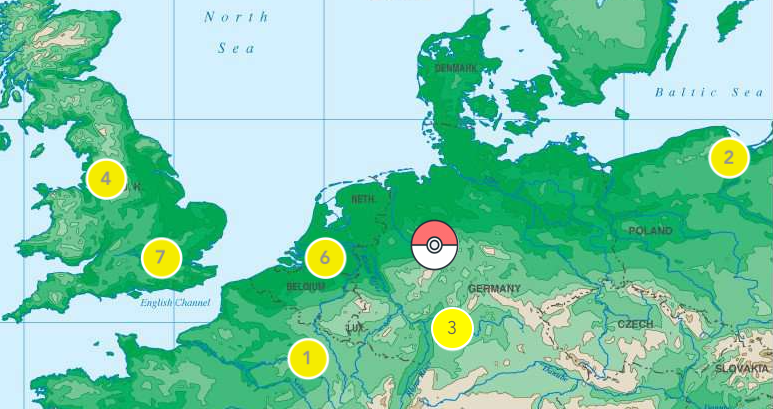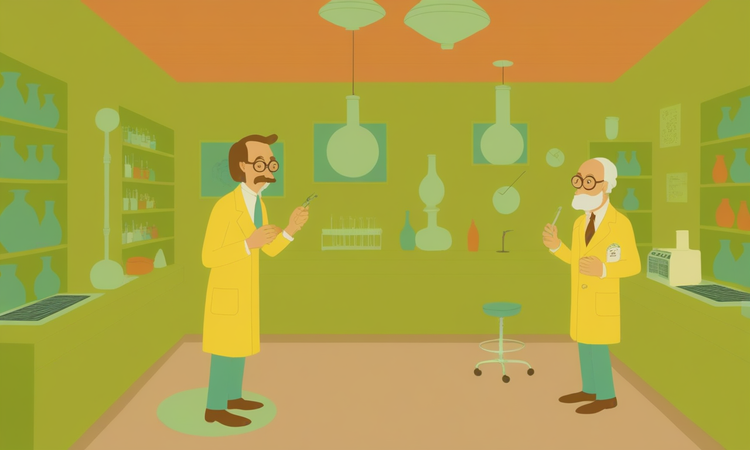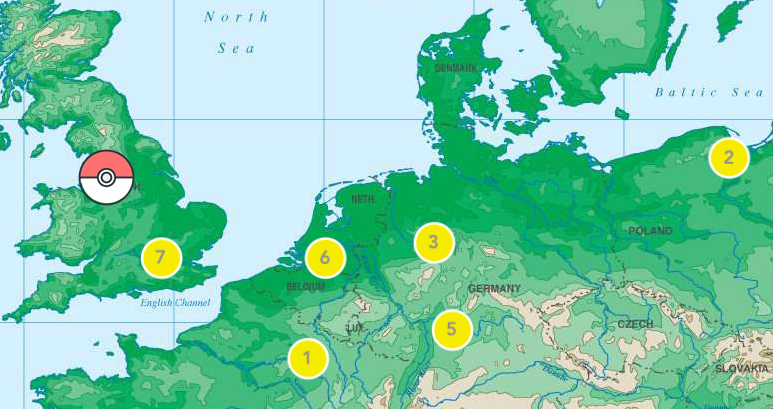Learning From Home: Parents Edition
I’ve been working for the past few days on putting together some thoughts for teachers, but in the back of my mind there was this little voice that kept saying “Hey man, you probably need to figure out what you’re going to do with your own children if their schools close down.” And when it piped up, I’d randomly jot down a few quick thoughts in a random note and then get back to whatever else was occupying my mind.
And then, of course, it happened. That next morning, I did the equivalent of the “buy a thousand rolls of toilet paper & cases of ramen noodles,” except instead of the grocery store I was at the home goods and office supplies store buying stuff like modeling clay and post it notes. Unsurprisingly, the lines in these places were very short.
For all of you who are going through this same thing, the most important thing I can emphasize is that your relationship with your child is the most important thing to think about with regard to how to spend the time at home. Driving them to try and meet some academic benchmark without the support they’d normally receive from their school is probably not the most important thing right now (unless your kid is really into it and wants to go for it).
The flip side of that is to remember that there are all kinds of meaningful learning that aren’t academic learning, and this can be a great time to lean into all of that. Humans are natural learners; the school & the classroom are relatively recent constructs we created to systematize an approach to learning, not the singular way that people learn. I’m personally looking forward to cooking & baking with the kids as a part of our typical day.
Listen, this could all turn out to be a total disaster for the Trudeau children, but I just thought I’d share the basic principles I was using to think through how to prepare, the way those principles manifested, and a few purchases I already feel really glad I made that you might still be able to get on Amazon if you’re in a place where that’s a thing.
The Principles
• Routine with variety - you’ve heard this one from everyone already: you have to establish a routine! And I don’t disagree. It does at least two things: it provides the kids with some level of predictability and assurance that they can get what they need, and it keeps the parents from having to answer the question, “what are we gonna do now?” A million times a day. We have our routine hanging up in the space we’re using. The one counterbalance I’d add though is on the side of the need for variety. At the beginning, a steady, predictable routine will go a long way toward establishing a new sense of normalcy. Before too long, we’re going to need ways to mix it up. As a mitigation, our routine has a few bits that are quite flexible so that the kids can make decisions each day to mix it up for themselves.
• Balance focused time, free time, and family time - this wisdom comes from Denise Pope at Stanford Graduate School of Education, one of the most down to earth people I know around raising grounded children. She emphasizes play time, down time, and family time, but she wrote this in the context of normal life where these pieces need to be mixed in during their after school time. For us, focused time is the kind of projects the kids are choosing to take up, and we are intentionally being playful in how we approach all of it.
• Build around projects of varying lengths, both individual and collaborative - the real underlying reason I’m focusing on projects has more to do with tapping into intrinsic motivation. The reality is that the more I can identify the things the kids are already interested in, the things that they would want to spend time doing anyway, the less deliberate advance planning I have to do. You can see in the daily schedule below that we have a portion of the beginning of the day to talk about what they’re curious about and what they want to work on today. That gives me an opportunity to work with them to build a little structure and specifically identify some of what they’re learning related to these questions. At the same time, I’m not going to be a task driver with their projects. They might pick some up and put them down, come back to them later or not at all. Honestly, during this time that’s not my major concern. My concern is that they’re remaining thoughtfully engaged in the world, not that they’re delivering some sort of work output.
Our daily routine for an 8 year old, a 5 year old, and a 3 year old looks like this:
• Wake up - 7:30: Everyone get ready (eat breakfast, get dressed, brush teeth, shower & drink coffee for adults)
• 7:30-8:30: chores & Physical activity
• 8:30-9:15: Hands-on play (coloring, painting, crafting, puzzling, building) at the table, including clean up
• 9:15-9:30: Discussion/kickoff ritual, “What am I curious about? What do I want to learn about today”?
• 9:30-10:00: With a parent Tommy & Nate plan activities for the day, with the other parent Addie starts skill practice
• 10:00-11:00: Learning activities, round 1 - preferably skill practice or exploration
• 11:00-11:30 Physical activity (including clean up from 1st round of activities)
• 11:30-12:00 Prepare lunch together
• 12:00-12:30 Eat lunch together
• 12:30-2:00 Quiet/individual time & lunch clean up
• 2:00-3:00 Project work time for Tommy & maybe Nate. Ideally, to include Addie
• 3:00-4:30 Free time & screen time
• 4:30-5:00 Bath time
• 5:00-6:00 Clean up house & prepare dinner
• 6:00-7:00 Eat dinner together, share & show what we learned today
• 7:00 - get ready for bed
It’s nothing revolutionary, but I also want to explicitly point out that between my wife & I, we’re probably spending the equivalent of 6 hours a day on this...and that really might not be possible for everyone. Hopefully between the principles and the practices there are some ways that you can pick & choose, and adapt it to work for you.
There are 3 things I bought that I’ve already been very thankful for:
1. White board adhesive paper- I bought 3 of these, one for each of the children, and hung them up in 3 spaces in the same room. Each kid knows which one is theirs, and only they are allowed to draw, put up post-its, erase, etc. In close quarters, I think it’s really important to have space that’s just your own. The paper is kind of a pain to stick to the wall, so if you can just get small whiteboards, that might be better.
2. Woven baskets - again, I bought 3, this time in 3 different colors. The principle here is that these are “project baskets.” When a kid is working on something and they’re done for now, but they know they’re going to come back to it, they can put it away there. No one else can put anything in their basket, no one else can take anything out. If it doesn’t go in the basket, they need to clean it up.
3. A simple desktop printer - I fully intend to use this sparingly, but it’s something that provides a lot of flexibility. If we need to print out crossword puzzles, coloring pages, and so on, we can. Who knows what we might need in a couple weeks? This at least provides a fall back option for a lot of different activities.
Tell you what - I’ll update on how this is going when we’ve been doing it for more than a day. I’ll let you know what adjustments we’ve made, what we’ve done to maintain our sanity, and any great resources we’ve been using. We’ll check back in a couple weeks.






Member discussion